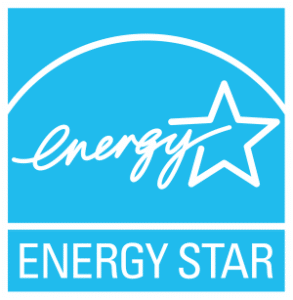If you’ve been researching HVAC replacement options, you’ve probably heard about heat pumps. Heat pumps are becoming a popular option for home heating and cooling thanks to their impressive capabilities and energy efficiency.
But what is a heat pump, exactly? And, how does it work?
Let’s break it down.
What Is a Heat Pump?
A heat pump is a type of HVAC system that can both heat and cool your home. They run on electricity and use refrigerant to move heat from one place to another instead of burning fuel to generate heat. This is a highly energy efficient process, which makes heat pumps a smart alternative to gas heating.
How Does a Heat Pump Work?
Heat pumps work by moving heat instead of generating it. They consist of an outdoor unit, an indoor unit, and refrigerant lines that connect the two. The system works by extracting heat from the air and transferring it into or out of your home, depending on the season.
This is almost exactly the same way a standard air conditioner works, but with one major difference. Air conditioners can only transfer heat out of your home. Heat pumps can reverse the heat transfer process, which allows them to move heat out and bring it in.
How a Heat Pump Works During the Winter (Heating Mode)
- Heat Absorption – The outdoor unit absorbs heat from the air, even in cold temperatures.
- Refrigerant Evaporation – The heat is warm enough to cause the refrigerant liquid inside the heat pump to evaporate and turn into a gas.
- Compression & Temperature Increase – The refrigerant gas moves through a compressor, which increases its pressure, causing the temperature to rise significantly.
- Heat Transfer to Home – The heated gas passes over the internal heat exchange surface, where the heat is transferred into your home.
- Refrigerant Condensation & Cycle Repeats – As heat is transferred indoors, the refrigerant cools down and returns to a liquid state, ready to restart the cycle until your home reaches the desired temperature.
Are Heat Pumps Effective in Cold Climates?
One of the biggest myths about heat pumps is that they don’t work well in cold weather. While older models struggled in extreme temperatures, modern cold-climate heat pumps are designed to function efficiently even in subzero conditions. In cities like Minneapolis and St. Paul, where winters can be harsh, cold-climate heat pumps are becoming an increasingly popular heating solution.
How a Heat Pump Works in the Summer (Cooling Mode)
- Heat Absorption Indoors – The heat pump reverses its function, extracting heat and humidity from the air inside your home.
- Refrigerant Evaporation – The indoor heat causes the refrigerant to evaporate, turning into a gas.
- Compression & Heat Release – The refrigerant gas moves through the compressor, raising its temperature.
- Heat Expulsion Outdoors – The hot refrigerant gas is sent to the outdoor unit, where it releases heat into the air outside.
- Refrigerant Condensation & Cycle Repeats – As heat is expelled, the refrigerant returns to a liquid state, and the cycle repeats to maintain a cool indoor temperature.
Types of Heat Pumps
All heat pumps use the same basic principle to move heat from one place to another. But there are a few different types of heat pumps, and they all work a little differently.
All-Electric Ducted Heat Pumps
All-electric ducted heat pumps connect to your home’s central air duct system. They use supply and return vents to collect and distribute air throughout your home, the same way a central furnace or air conditioner does. The all-electric heat pumps we install have electric resistance backup for extremely cold days when heat pump performance can drop.
Ductless Heat Pumps
As the name suggests, ductless heat pumps don’t connect to air ducts. Instead, the indoor units (called air handlers or heads) deliver heated/cooled air directly into the rooms or areas they’re installed in. Since they don’t need ducts, ductless heat pumps are extremely flexible. They can be installed almost anywhere in your home and are perfect if you’re upgrading from baseboard or radiator heating.
Dual Fuel Heat Pumps
Cold-climate heat pumps can operate in very cold temperatures, but the colder it gets outside, the less efficient they become. If you want the benefits of a heat pump for your home but are worried it can’t handle the Minnesota winter, a dual fuel system is the best option. Dual fuel heat pumps connect a ducted heat pump with a furnace. The heat pump heats/cools your home most of the time, but on extremely cold days, the furnace automatically takes over.
Is a Heat Pump Right for Your Home?
Whether you want to make your house more comfortable, improve its energy efficiency, or upgrade to a more environmentally friendly heating and cooling system, a heat pump is a great option. But not all heat pumps are created equally. To get the most out of your new heat pump, you need an HVAC installer who can provide a custom solution tailored to your home.
At VisionAiry Heating & Cooling, we specialize in heat pump installation. We will test, measure, and install the perfect system to maximize comfort and energy efficiency in your home.






